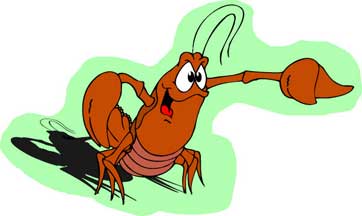I spend many hours with my nose deep in scientific journals, ferreting out those tidbits of research that a physical educator might use.
This extensive reading has led me to an inescapable conclusion: there are a lot of people doing some very strange things in the name of scientific research.
Peruse, if you will, some titles I once discovered from a foray to the library. These experiments raise many questions about experimental method. Questions like: how do scientists conduct these experiments? And more pertinent, why do they conduct them? Take this study:
“Cardiac and skeletal muscle enzyme levels in hypertensive and aging rats.”
Where, exactly, does a person find a rat with hypertension? Do you advertise in the personal columns of rodent newspapers? Or do rat-snatchers lurk around the waiting rooms of animal hospitals or in steak-house dumpsters? Then there’s:
“Tuning of chemoreceptor cells of the second antenna of the American lobster (Homarus americanus) with a comparison of four of its other chemoreceptor organs.”
It’s just speculation, but was this study performed for its commercial possibilities? Automobile tuning is already big business in this country. Is lobster tuning the career of the future? I’m sure thousands of seafood restaurants would kill for better tuned lobsters. And, finally:
“Tetrachromatic color vision in goldfish: evidence from color mixture experiments.”
The question here is, what prompted this scientist to investigate color vision in goldfish? Was it because his own fishy pets were wearing brown socks with blue suits? Were they running stop lights because they couldn’t distinguish red from green? Or did they reveal their trauma, during psychotherapy, that because of their visual deficiency, they did not even realize they were gold!?
And it’s not just experiment titles that tell us the world of scientific research is strange. Take a quick gander at the products advertised in a respected physiology journal:
“Inexpensive four-lane electronically speed-controlled treadmill for rats and mice.”
What, no Stairmaster? Or how about:
“Grip Strength Meter for Rats & Mice”
Yup, put the little guys on a weight-training program and they’ll want to know how their handshake is improving.
And yet, it is pure research like this — as strange as these studies may seem — that can eventually produce information that applies to the lives of real people…including those of physical educators.
So, dear scientists, keep tuning your lobster antennae, keep checking the color vision of those neurotic goldfish. And when your next phys-ed breakthrough comes along, please give those muscle-bound rodents of yours a firm handshake on our behalf.
Dick Moss, Editor,
PE Update.com
To subscribe to the free PE Tips of the Week Newsletter, Click Here!
To check out the PE Update.com website, Click Here!
[tags]physical education,scientific research,scientific studies[/tags]







